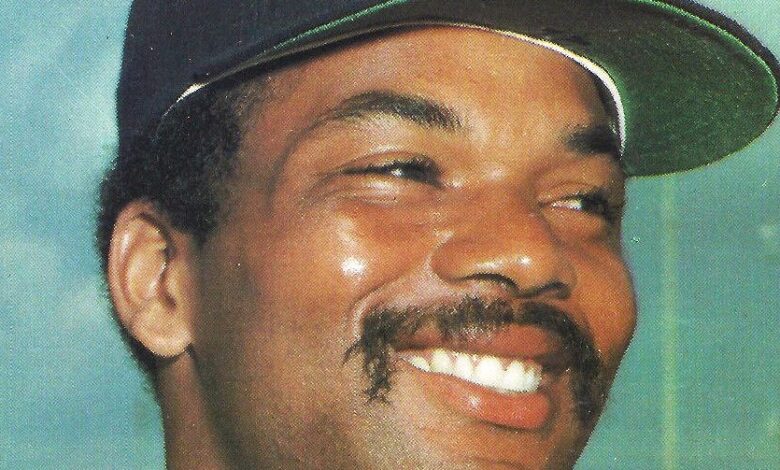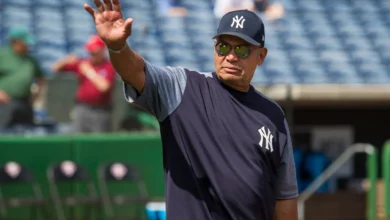
As a sportswriter and chronicler of baseball history, I’m obligated to commemorate every anniversary that ends in zero, regardless of how innocuous, insignificant or downright silly it may be. So today we honor the 40th anniversary of the Pittsburgh Pirates’ 1984 spring training. The actions and inactions of that spring spiraled the Pirates into a losing season, kick-starting a 40-year period that included 32 losing seasons and no postseason series wins.
The Pirates hadn’t experienced much failure since general manager Hardy Peterson and manager Chuck Tanner took over in 1977. There were close second-place finishes behind the Philadelphia Phillies in 1977 and 1978, culminating in the 1979 World Series championship. After a couple of down years, the team was quickly rebuilt into a legitimate contender again in 1982. In 1983, the Pirates finished strong and ended the season in second place, six games behind the Phillies, who went on to win the National League pennant.
Optimism about the Pirates was high in 1984. They were strong in the starting pitching department, but after Dave Parker departed as a free agent, Peterson needed to find some offense. Oddly, he chose to trade Mike Easler, who had hit .307/.349/.441 in 1983, to the Boston Red Sox for another starting pitcher, John Tudor. Peterson then signed 37-year-old free agent Amos Otis, who hit .261/.313/.357 in 1983, to replace Easler’s bat. Peterson and Tanner had worked so well together for seven years. Now it began to seem as though they were no longer on the same page.
Enter a former All-Star
In February 1984, the Pirates invited Ruppert Jones to camp as a non-roster player. Jones, then 29, was a left-handed hitting center fielder who began his career in 1976. He had played for four teams, most notably the Seattle Mariners. At that point, he was a two-time All-Star who batted .253/.329/.403, 89 HR and 398 RBIs for his career. Jones was also an above-average fielder.
Besides Otis, other outfielders the Pirates had under contract were Doug Frobel, Brian Harper, Lee Lacy, Lee Mazzilli and Marvell Wynne. Jones had an uphill climb to make the team. Jones made an immediate impression, hitting a home run and a double in the first intrasquad game on March 6.
That’ll be two dollars, please
The next day, another subplot would develop. Right before the Pirates’ Grapefruit League opener vs. the New York Mets, Pirates third baseman Jim Morrison jammed his thumb. The regular third baseman, Bill Madlock, was recovering from an appendectomy. The call went to 22-year-old Jim Opie, a third baseman who had only two single-A seasons under his belt.
Opie, who was left behind for some batting practice, quickly got into uniform and jumped into his car. At the ballpark’s parking lot, he was denied entrance unless he paid two dollars. Opie wasn’t on the list of players and didn’t bring his wallet. Somebody paid his way and Opie rushed into the ballpark. All Opie did that day was hit a two-run homer in the third inning off veteran Mike Torrez to give the Pirates the lead in an eventual 4-3 victory. Opie had hit 20 homers for Alexandria of the Carolina League in 1983. But this was special for a kid who had no chance to make the team. Or did he?
Just trying to make an impression
Three days later, against the Chicago White Sox, Opie had three hits, including his second home run. He was now 8-for-11 in the spring. He downplayed his early success, telling Bob Hertzel of The Pittsburgh Press, “Ah, it’s just a matter of these [pitchers] here being older and trying to play themselves in shape and me coming in and trying to make an impression. That’s all.” Maybe so, but nobody else on the ballclub was hitting .727.
Still, Opie had virtually no chance to make the team. “There’s a guy with four batting titles in front of him,” said Tanner, referring to Madlock. But on March 11, Opie started at shortstop, recording two more hits. He was now 10-for-15 and Tanner was saying he’d take a look at him at second base, too. Tanner was changing his tune. “Right now, if I made a cut, [Opie] would stay here,” Tanner told Hertzel.
The numbers game
Alas, Tanner would soon have to cope with the fact that the numbers weren’t working in favor of the team he wanted to bring north. Mazzilli had fallen out of favor with Tanner in 1983 when baserunners took liberties with his weak throwing arm. But Mazzilli was under a long-term contract worth $2.3 million. Ownership wouldn’t allow him to be cut. Young first baseman Eddie Vargas was out of options and couldn’t be cut, either. The front office was big on Frobel and Harper.
The unkindest cuts of all
On March 19, Opie was reassigned to the minor leagues. In eight games, he hit .423, 2 HR and 5 RBIs. It’s hard to say he “slumped” from .667. That’s more akin to a market correction. The day before, Tanner informed Jones he’d have to show he could hit home runs to make the club when they broke camp in two weeks. At the time, Jones was 8-for-31 with one home run. “If I try to hit home runs, I won’t hit anything,” he told Charley Feeney of the Pittsburgh Post-Gazette.
Whatever it was Jones was or wasn’t trying to do, it was working. On the 25th, Jones hit a homer and a single against the Cincinnati Reds and yet was informed by Tanner he couldn’t make the team. Jones elected to stay in camp with the Pirates in case a trade or injury opened a spot for him. He hit a home run the next day against the Minnesota Twins. He added another home run on the 30th against the Phillies. All told, since his talk with Tanner, Jones became the hottest hitter in camp, going 9-for-14 with three homers and raising his spring average to .370. Unfortunately, on the 31st, Jones became the final cut of the spring. There was simply no room. Tanner called it the most difficult thing he ever had to do.
Aftermath
The Pirates finished the 1984 season at 75-87, “good” for last place in the East Division. Otis hit .165/.213/.206, fielded poorly and was released in August. Harper and Vargas seldom played. The Pirates’ two highest-paid players, Madlock and Jason Thompson, stunk.
Meanwhile, Jones caught on with the Detroit Tigers and got a World Series ring as a result. For the Tigers, Jones hit .284, better than any Pirates outfielder except Lacy. Jones also hit 12 homers, which would have tied him for first among Pirates outfielders. Opie played seven minor league seasons, hitting .260/.329/.396, 59 HR and 306 RBIs for his career. He never reached the majors.





